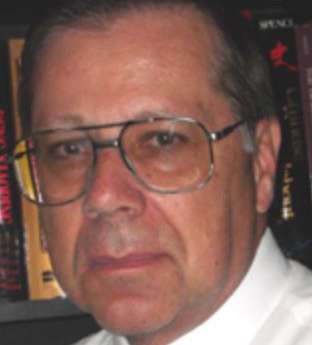
By JOHN RICHARD SCHROCK
On November 4, 1979, the American Embassy in Tehran was stormed and American hostages were taken. Citing the account by Mark Bowden, Wikipedia summarizes how: “Anticipating the takeover of the embassy, the Americans tried to destroy classified documents in a furnace. The furnace malfunctioned and the staff was forced to use cheap paper shredders. Skilled carpet weavers were later employed to reconstruct the documents.”
Yes, all countries’ embassies and consulates have classified documents that they must destroy to keep from falling into outsider’s hands. Burning works. Paper shredders didn’t.
Quite a few years ago, I was teaching overseas at an American international school. That city has an American Consulate. It is four stories tall. If you went in to take care of passport renewal, you would only be allowed on the first floor. The top three were off limits.
I always started the very first day of the school year by having each student introduce themselves. This is really interesting in an international school. While most students were American, some were local and others were from Canada, England, Israel, and many other countries.
I went down each row, having each student explain something about themselves, how many languages they spoke, what vocation they might hope to enter, etc.
When I got to one new student, he said way too much. He was American and just came from an eastern European bloc nation (that at that time was in the Soviet Union) and mom and dad were both officers in a U.S. military intelligence service and worked at the American consulate back there but they had just moved here where they would monitor signals on the upper floors of the consulate, and he got to work there weekends emptying wastebaskets and cleaning up because they can't trust outsiders to be janitors and....
I finally got him cut off. But he would, throughout the school year, spill even more details about our consulate. It was a major monitoring station, which is not unusual for consulates.
So when I hear the U.S. press report of the Houston Chinese Consulate burning documents because they had to close down, that makes perfect sense because that is exactly what we tried to do in Tehran.
On April 1, 2001, a U.S. Navy spy plane flying off the coast of China and a Chinese J-8II clipped each other. The Chinese plane crashed killing the pilot. The crippled U.S. plane had to land on an airfield on the Chinese Island of Hainan.
As soon as these countries found themselves in this situation, negotiations between embassies and consulates were critical. Arrangements were made and the American crew returned unharmed. However, this immediately encouraged a large number of videogame players on both sides to attempt to break into the “enemy” side. They envisioned themselves as cyberspace warriors.
An article in the Frankfurter Allgemeine Zeitung described the immediate actions of civilian “cyber-patriots” on both sides. American hackers organized by “Poisonbox” launched “Chinakiller” to attack about 100 Chinese websites. The “Hacker Union of China” led by “Lion” and the “Green Brigade” attacked our websites, including two U.S. Navy sites. A German site kept score. And many of these hackers gained their skills by copying the online instructions of an earlier Taiwanese hacker called “Coolfire.”
In the years since 2001, there has been an increased awareness of “cyberwarfare” that generates false information on social media and threatens to shut down power plants and crack into governmental agency records. Nearly always, our press reports the likely culprit as an enemy government. But actual tracing of such hacking, to the extent that it is possible, reveals that the vast majority of cyber crime and cyber attacks, especially the use of ransomware, is by private individuals, not governments. But one known serious cyber attack by government agencies was “Stuxnet,” a computer “worm” that damaged the nuclear program in Iran. And Stuxnet was allegedly developed by the U.S. and Israel.
. . .
John Richard Schrock has trained biology teachers for more than 30 years in Kansas. He also has lectured at 27 universities in 20 trips to China. He holds the distinction of “Faculty Emeritus” at Emporia State University.





